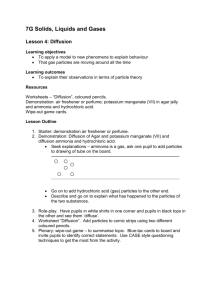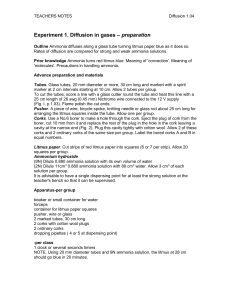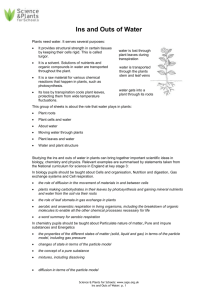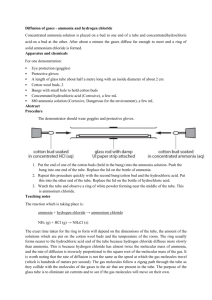Hot vs Cold Water: Diffusion Experiment Lab Report
advertisement
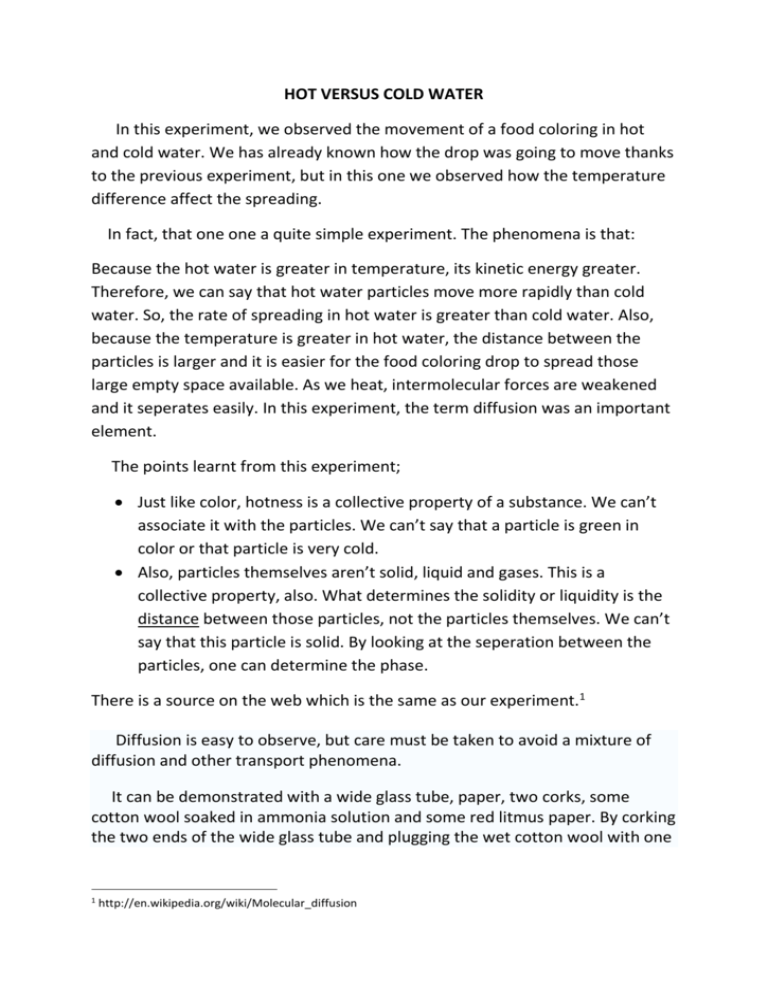
HOT VERSUS COLD WATER In this experiment, we observed the movement of a food coloring in hot and cold water. We has already known how the drop was going to move thanks to the previous experiment, but in this one we observed how the temperature difference affect the spreading. In fact, that one one a quite simple experiment. The phenomena is that: Because the hot water is greater in temperature, its kinetic energy greater. Therefore, we can say that hot water particles move more rapidly than cold water. So, the rate of spreading in hot water is greater than cold water. Also, because the temperature is greater in hot water, the distance between the particles is larger and it is easier for the food coloring drop to spread those large empty space available. As we heat, intermolecular forces are weakened and it seperates easily. In this experiment, the term diffusion was an important element. The points learnt from this experiment; Just like color, hotness is a collective property of a substance. We can’t associate it with the particles. We can’t say that a particle is green in color or that particle is very cold. Also, particles themselves aren’t solid, liquid and gases. This is a collective property, also. What determines the solidity or liquidity is the distance between those particles, not the particles themselves. We can’t say that this particle is solid. By looking at the seperation between the particles, one can determine the phase. There is a source on the web which is the same as our experiment.1 Diffusion is easy to observe, but care must be taken to avoid a mixture of diffusion and other transport phenomena. It can be demonstrated with a wide glass tube, paper, two corks, some cotton wool soaked in ammonia solution and some red litmus paper. By corking the two ends of the wide glass tube and plugging the wet cotton wool with one 1 http://en.wikipedia.org/wiki/Molecular_diffusion of the corks, and litmus paper can be hung with a thread within the tube. It will be observed that the red litmus papers turn blue. This is because the ammonia molecules travel by diffusion from the higher concentration in the cotton wool to the lower concentration in the rest of the glass tube. As the ammonia solution is alkaline, the red litmus papers turn blue. By changing the concentration of ammonia, the rate of color change of the litmus papers can be changed.
